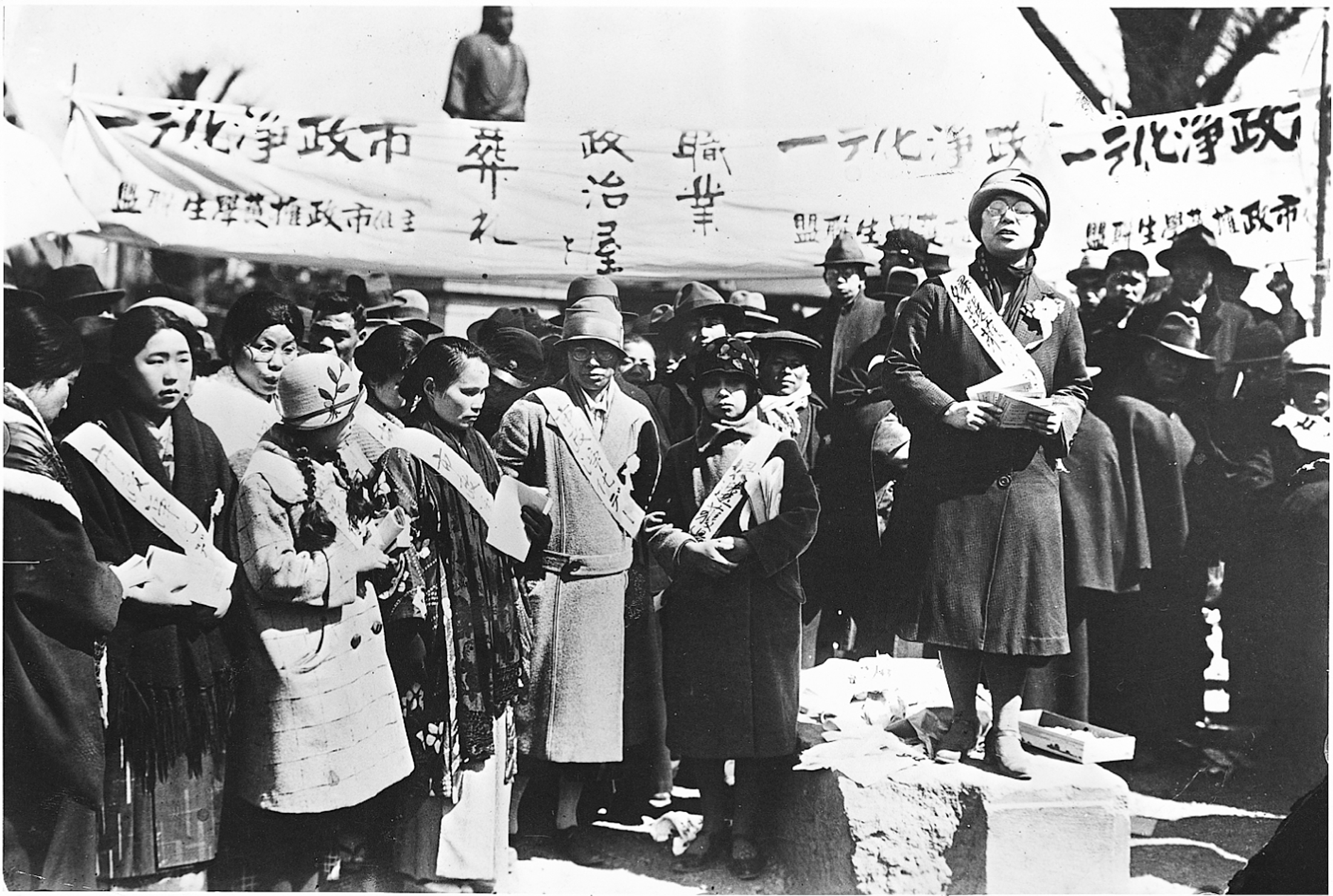From Liberalism to Ultranationalism in Japan
The nearly total homogeneity of the Japanese population (98.5 percent ethnic Japanese) was a major factor in the Meiji reformers’ efforts to build a powerful, nationalistic, modern state and resist Western imperialism (see “The Meiji Restoration” in Chapter 26). Their spectacular success deeply impressed Japan’s fellow Asians. The Japanese, alone among Asia’s peoples, had mastered modern industrial technology by 1910 and had fought victorious wars against both China and Russia. The First World War brought more triumphs. In 1915 Japan easily seized Germany’s Asian holdings and retained most of them as League of Nations mandates. The Japanese economy expanded enormously. Profits soared as Japan won new markets that wartime Europe could no longer supply. In the early 1920s Japan made further progress on all fronts. Most Japanese nationalists believed that Japan had a semidivine mission to enlighten and protect Asia, but some were convinced that they could achieve their goal peacefully. In 1922 Japan signed a naval arms limitation treaty with the Western powers and returned some of its control over the Shandong Peninsula to China. These conciliatory moves reduced tensions in East Asia. At home Japan seemed headed toward genuine democracy. The electorate expanded twelvefold between 1918 and 1925 as all males over twenty-

Japan’s remarkable rise was accompanied by serious problems. Japan had a rapidly growing population but scarce natural resources. As early as the 1920s Japan was exporting manufactured goods in order to pay for imports of food and essential raw materials. Deeply enmeshed in world trade, Japan was vulnerable to every boom and bust. These economic realities broadened support for Japan’s colonial empire. Before World War I Japanese leaders saw colonial expansion primarily in terms of international prestige and national defense. They believed that control of Taiwan, Korea, and Manchuria provided an essential “outer ring of defense” to protect the home islands from Russian attack and Anglo-
Japan’s rapid industrial development also created an imbalanced “dualistic” economy. The modern sector consisted of a handful of giant conglomerate firms, the zaibatsu, or “financial combines.” Zaibatsu firms like Mitsubishi employed thousands of workers and owned banks, mines, steel mills, cotton factories, shipyards, and trading companies, all of them closely interrelated. Zaibatsu firms wielded enormous economic power and dominated the other sector of the economy, an unorganized multitude of peasant farmers and craftsmen. The result was financial oligarchy, corruption of government officials, and a weak middle class.
Behind the façade of party politics, the old and new elites — the emperor, high government officials, big businessmen, and military leaders — were jockeying savagely for the real power. Cohesive leadership, which had played such an important role in Japan’s modernization by the Meiji reformers, had ceased to exist. By far the most serious challenge to peaceful progress was fanatical nationalism. As in Europe, ultranationalism first emerged in Japan in the late nineteenth century but did not flower fully until the First World War and the 1930s.
Though their views were often vague, Japan’s ultranationalists shared several fundamental beliefs. They were violently anti-
The ultranationalists were noisy and violent in the 1920s, but it took the Great Depression of the 1930s to tip the scales decisively in their favor. The worldwide depression, which had dire consequences for many countries (see Chapter 30), hit Japan like a tidal wave in 1930. Exports and wages collapsed; unemployment and raw suffering soared. Starving peasants ate the bark off trees and sold their daughters to brothels. The ultranationalists blamed the system, and people listened.